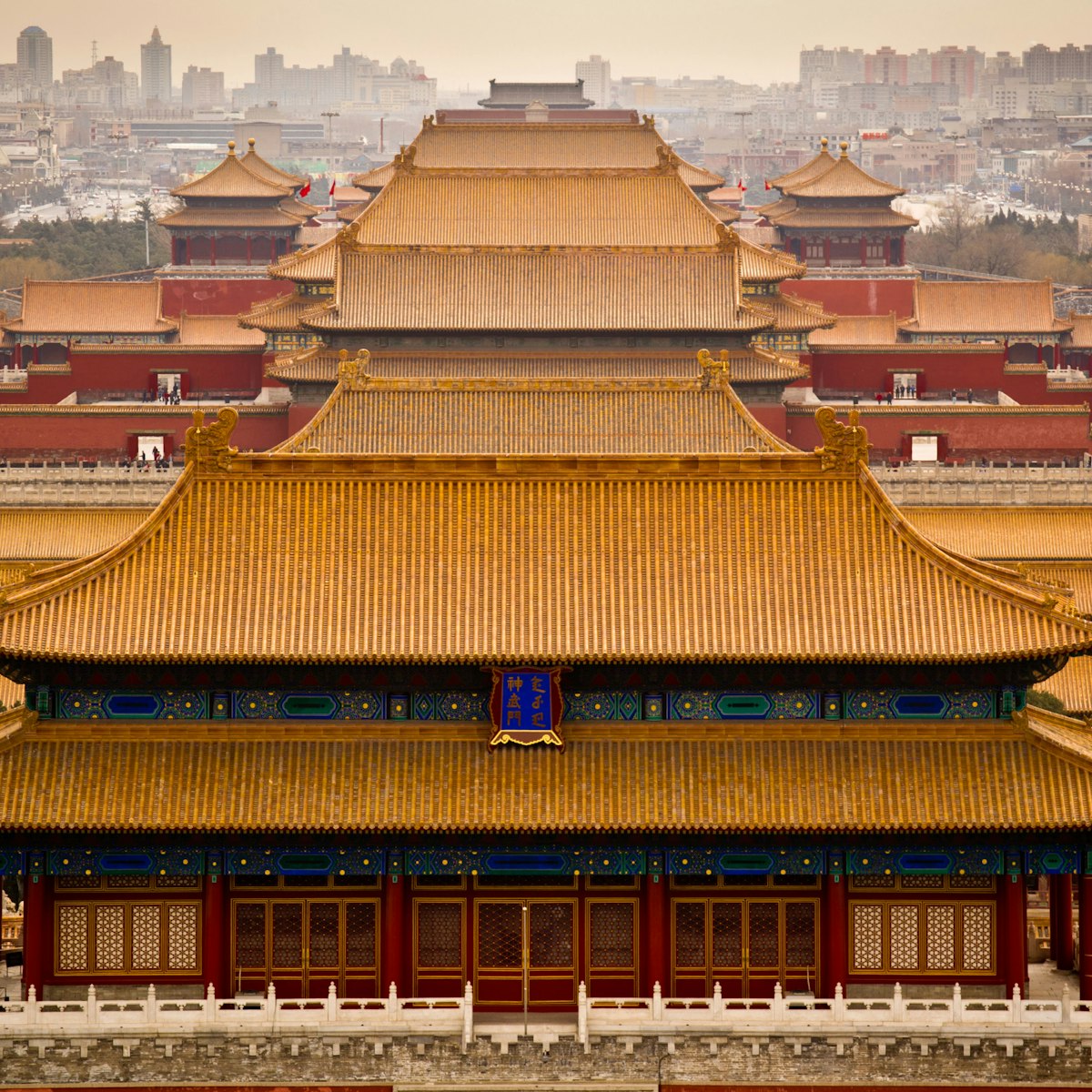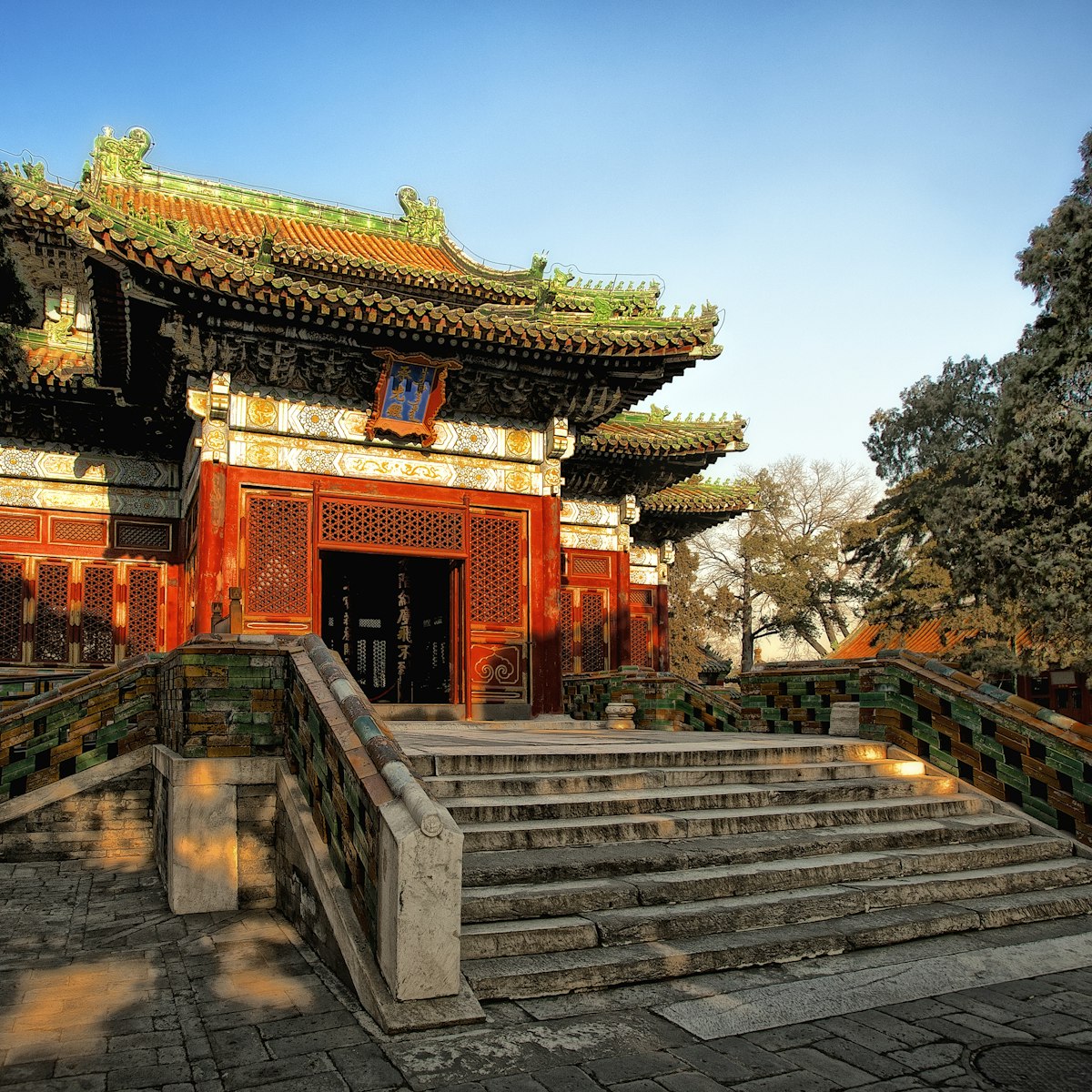This inactive Tibetan Buddhist temple can't be entered, but the elevated square in front, which forms part of a small park, is a peaceful little escape offering views of the surrounding reconstructed sìhéyuàn, luxury homes with garages that house government elites. The structure of the main hall is unusual in its Manchu style.
Before renovation work in 2001, the temple housed a school since the 1920s. For a few years until 2009 it was home of the Beijing Taxation Museum.







